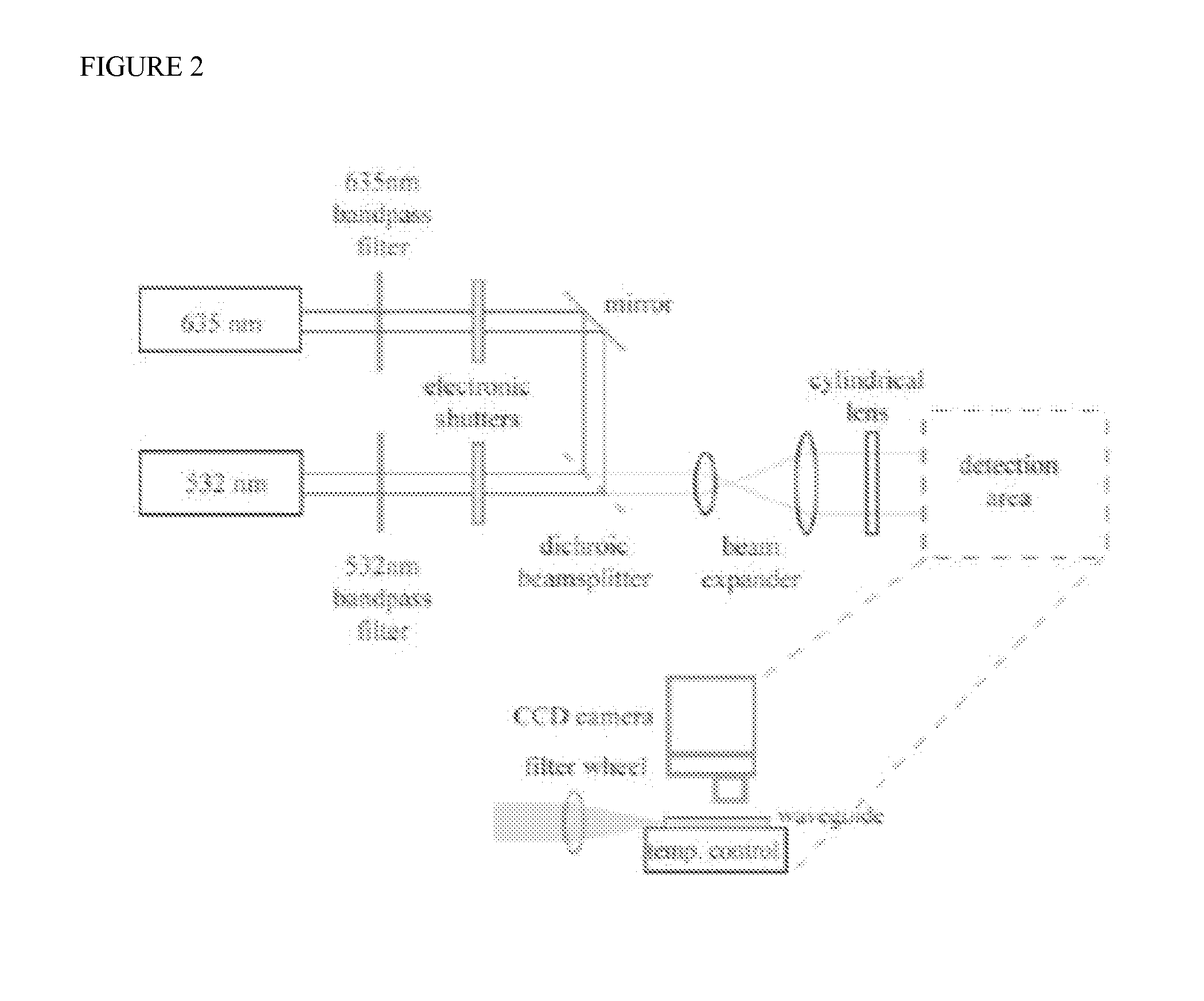Methods and compositions related to quantitative, array based methylation analysis
a methylation analysis and array technology, applied in the field of nucleic acid detection, can solve the problems of time-consuming, laborious and technical complexity, and the silencing of the gene's expression, and achieve the effect of reducing the cost of bisulfite treatment, reducing the cost of methylation, and improving the quality of methylation
- Summary
- Abstract
- Description
- Claims
- Application Information
AI Technical Summary
Problems solved by technology
Method used
Image
Examples
embodiments
[0037]The methylation of DNA is an important mechanism of epigenetic inheritance, and frequently marks transposons and the promoters of silenced genes. Hypermethylation of cellular DNA usually marks the cell as cancerous; moreover, the methylation level of the MGMT gene promoter in transformed cells is a strong indicator of response to alkylating chemotherapies [hegi05, hermisson06]. Therefore, there is a great need for improved assays to measure the methylation levels of many genetic loci simultaneously. Such assays benefit both research and clinical (i.e. personalized medicine) applications; ideally, an assay is scalable to thousands of loci while utilizing limited sample volumes from human individuals or model organisms.
[0038]DNA Methylation
[0039]In eukaryotic DNA, cytosine-guanine sequences (CpGs) are often found with the cytosine methylated at carbon 5 (m5C). (The “p” is for the phosphodiester linkage between the nucleotides.) Symmetric methylation of CpG motifs in genomic DNA ...
example 1
Methylation Analysis
[0089]Real-time hybridization of target to probe is modeled by a single-component, two-compartment reaction. This model has served well in surface plasmon resonance biosensors [myszka98] and in these real-time systems [bishop08]. At each spot, the chemical reaction is described by:
B(t)t=kaC(t)[RT-B(t)]-kdB(t)
[0090]where B(t) corresponds to the surface bound concentration of oligo (i.e. total dsDNA concentration), C(t) is the concentration of the target above the binding spot (where a depletion layer can form) and RT is the total concentration of probes on the surface. C(t) is governed by:
(ViS)C(t)t=-kaC(t)[RT-B(t)]+kdB(t)+kM[Co-C(t)]
[0091]where Vi is the volume of the depletion region just above the spot, S is the surface area intersecting the bulk sample solution and depletion region, Co is the constant bulk solution concentration, and kM represents an effective diffusion rate constant of target across the interface (and is a fitting parameter). In these experim...
example 2
Test Binding of MBD Proteins to DNA Targets
[0110]Three pairs of DNA targets were annealed outside the biosensor and then captured onto a streptavidin surface. Each was captured at two different surface densities as shown in FIG. 7 at ˜260 RU and 170 RU. Then three samples of MBD were tested for binding across the different target surfaces using a 6 fold dilution of each starting material followed by a 3-fold dilution series. Each dilution series was tested in duplicate.
[0111]The responses for the MBD samples over the different target surfaces can be seen in FIG. 8. Significant and consistent binding to the MOO / OOM surface with little nonspecific binding was observed. FIG. 9 shows fits of the equilibrium response data for the three MBD proteins over the two MOO / OOM target surfaces.
PUM
 Login to View More
Login to View More Abstract
Description
Claims
Application Information
 Login to View More
Login to View More - R&D
- Intellectual Property
- Life Sciences
- Materials
- Tech Scout
- Unparalleled Data Quality
- Higher Quality Content
- 60% Fewer Hallucinations
Browse by: Latest US Patents, China's latest patents, Technical Efficacy Thesaurus, Application Domain, Technology Topic, Popular Technical Reports.
© 2025 PatSnap. All rights reserved.Legal|Privacy policy|Modern Slavery Act Transparency Statement|Sitemap|About US| Contact US: help@patsnap.com



